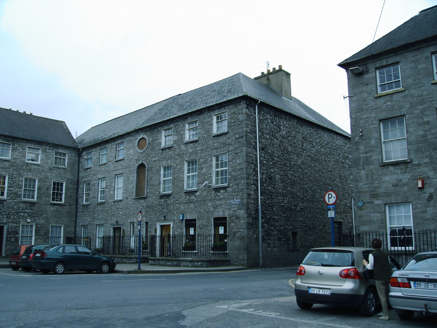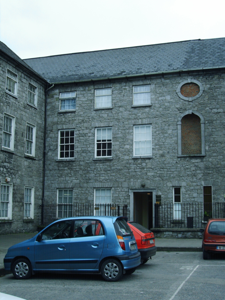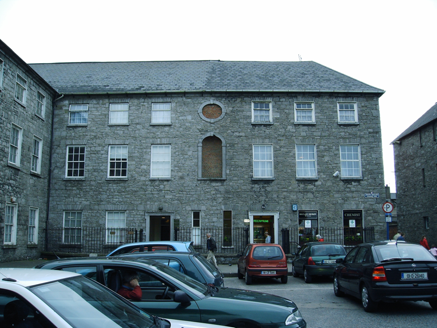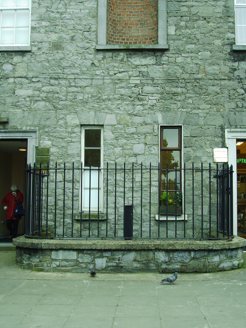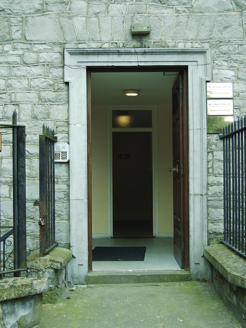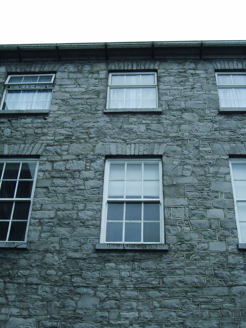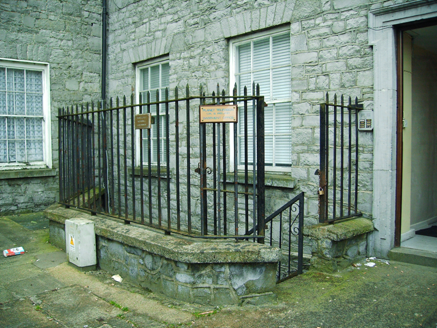Survey Data
Reg No
21518037
Rating
National
Categories of Special Interest
Architectural, Artistic
Original Use
House
In Use As
Surgery/clinic
Date
1750 - 1755
Coordinates
158173, 156977
Date Recorded
03/05/2005
Date Updated
--/--/--
Description
Corner terraced three-bay three-storey over basement limestone townhouse, built in 1751, with a full-height two-bay return and compositionally linked to neighbouring building by a pair of lancet windows at ground floor level and a red brick faced niche and oculus above, and which together forms half of one side of the square. Artificial slate hipped roof on an L-plan. Rendered chimneystack with plain clay pots. uPVC rainwater goods. Partially coursed random rubble limestone walls to the front elevation with cement re-pointed throughout. Limestone ashlar architrave to niche and oculus. Square-headed window openings to front elevation with limestone flat arch voussoirs, limestone ashlar sills, limestone reveals and replacement uPVC windows at second floor level, reproduction six-over-six timber sash windows at first and ground floor level. Two-over-two timber sash window to lancet opening. Window opening to north of door in basement opening is infilled with limestone and brick, small narrow vent remaining. Square-headed front door opening, with limestone voussoirs above original lugged limestone architrave and flat-panelled Teak timber door, c. 1995. Basement door opening with located under front door platform and retains a limestone ashlar lintel. Front site basement area enclosed by rubble limestone plinth wall surmounted by concrete coping, c. 1990, and replacement wrought-metal railings. The plinth wall and railings return on a chamfered corner to meet the concrete front door platform. Metal stairs to basement area, c. 2000. Flat-roofed structure to basement area. To Barrack Lane there is a former gate opening forming an abrupt rubble limestone quadrant convex screen wall with square-plan piers and modern metal roller shutter gate. The wall continues northwards to form a squared and coursed limestone wall with later opening inserted, c. 2000. Single-bay rubble limestone single-storey outbuilding with loft level may also be associated with this building.
Appraisal
John's Square was designed by Francis Bindon. He was born in Clare c. 1698 and died in 1765. His early career was as a painter. The Square is probably the most important classical building scheme of the mid eighteenth-century in Limerick City. Bindon's building activity in Ireland is entirely provincial, as no known buildings of his authorship are known to have been constructed in Dublin. Notwithstanding the re-pointing of the façade, the loss of original sash windows and door leaf, this building remains of great significance as it forms an integral part of the Square. The survival of this building, and the rear site gates and outbuildings are of great importance to the architectural heritage of Limerick City.
